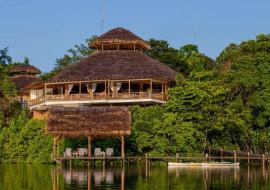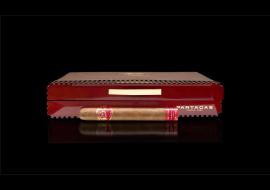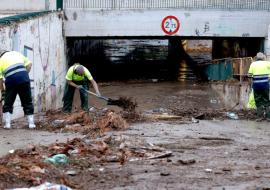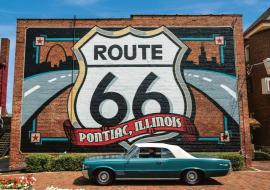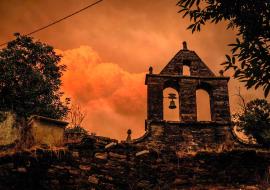Hemingway Home: A Draw for Havana
Nine miles east of Havana in a modest town called San Francisco de Paula is Finca Vigia, the home of Ernest Hemingway from 1940 to 1960 and an attraction that is a must-see on most people-to-people itineraries.
Hemingway wrote "For Whom the Bell Tolls" and "The Old Man and the Sea" at Finca Vigia, whose name means Lookout Farm.
On a Friendly Planet tour of Havana last spring, I was among dozens of international visitors one morning as our guide told us that Hemingway's third wife, Martha (he had four in all), found the house, which had been built in 1886 by a Spanish architect.
"They bought the house for $12,500," the guide said. "Martha paid for the original restoration of the home and the grounds, and they lived here with dozens of cats."
Small headstones in one of the gardens mark the final resting places of three of the cats.
The house and gardens have since been restored by the Cuban government to its 1950s splendor and reopened as a museum in 2007, following years of neglect after Hemingway's death in Idaho in July 1961.
Many of the furnishings in the rooms are original, and much has been preserved, including Hemingway's pencil markings on his bathroom wall where he charted his blood pressure each morning.
Although visitors cannot wander through the house, there's ample viewing space through open windows and doorways.
The rooms are airy, light and lined with dozens of bookcases (Hemingway's library numbered over 9,000 books), photos, stuffed animal heads, original liquor bottles and paintings of Hemingway as a big game hunter.
Hemingway's writing studio on an upper floor with breezes and views of the nearby marina contains his desk, where his Corona typewriter sits.
"He wrote for three hours each morning and then went marlin fishing in the afternoons on Pilar, his beloved fishing boat," the guide said.
Those fishing experiences formed the context of "The Old Man and the Sea," which he wrote in 1951, the tale of a Cuban fisherman who spent four days fighting a swordfish only to lose it to sharks.
Pilar, the 38-foot wooden boat, is on display in drydock on the grounds of Finca Vigia, as well, alongside a now-empty swimming pool, a small baseball field and groves of almond, mango and avocado trees.
Hemingway entertained often at Finca Vigia, between writing assignments that took him to Europe over the years. Fidel Castro was a guest once in July 1960, according to the guide.
Hemingway's three sons from prior marriages came often, staying in a guesthouse on the property that now houses museum offices.
Finca Vigia is open daily; the $3 admission is usually included on the people-to-people itineraries.
The site is maintained by the Finca Vigia Foundation, which collaborates with Cuban colleagues and the National Trust for Historic Preservation to preserve the home, its contents and Pilar.
Source: Travel Weekly







